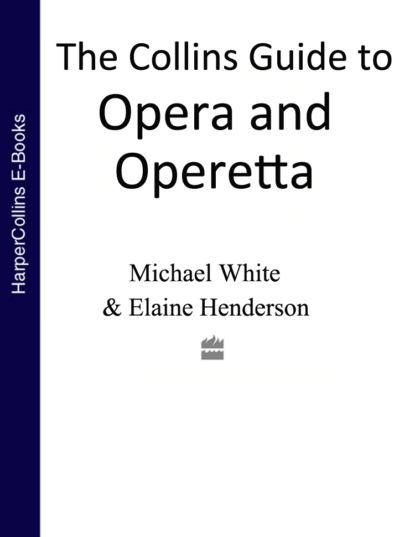По всем вопросам обращайтесь на: info@litportal.ru
(©) 2003-2024.
✖
The Collins Guide To Opera And Operetta
Автор
Год написания книги
2018
Настройки чтения
Размер шрифта
Высота строк
Поля
Claggart, Master-at-Arms
Bass
Synopsis of the Plot
Setting: At sea on The Indomitable; 1797, during the French wars
ACT I Captain Vere, now an old man, reflects on the inseparability of good and evil, recalling in particular the case of Billy Budd.
Billy is one of three men impressed from a passing merchant ship, significantly named The Rights of Man, to serve on The Indomitable. Both officers and men take to the handsome, cheerful and lively Billy, except for Claggart who takes an instant, and envious, dislike to him and determines to destroy him. Claggart’s sadistic ways terrify the weaker members of the crew, who will do anything to avoid further floggings, including carrying out Claggart’s instructions to persecute Billy. Billy is warned to be wary of the Master-at-Arms, but he brushes the warning aside, even when he is told that Claggart is fomenting a rumour that Billy wants to start a mutiny.
ACT II As mists swirl around the ship, Claggart warns the captain that there is talk of mutiny, but before he can implicate Billy the mists lift to reveal a French ship. Instantly the crew rushes to battle stations, but the mists close round again before any significant damage can be inflicted. Claggart again approaches the captain, claiming Billy as the instigator of a mutiny, and although Vere is incredulous he agrees to interview Billy in Claggart’s presence. Billy, stunned at the charges, is afflicted by his childhood stammer and, unable to speak, strikes Claggart in anger and frustration and kills him with a single blow. Taken before a drumhead court, Billy is sentenced to hang for murder and the captain refuses to intervene on his behalf.
Back in the present, Captain Vere asserts that he could indeed have saved Billy, although he no longer questions why he did not do so. He claims to have found peace and contentment, but his vivid recollection of these powerful events long ago casts doubt on this assertion.
Music and Background
Many Britten enthusiasts find this his most rewarding opera score, and it is certainly one of his biggest, calling for large forces which are used in grand, near-Verdian terms. The cast is all-male but with voice-types so precisely specified for contrast that the music never feels locked in a limited world of sound. And just as the story describes a symbolic conflict between good (Billy) and evil (Claggart), so the music carries an associated symbolism of conflicting keys – heard at the outset when the curtain rises to an accompaniment of two string groups, one playing in B flat Major, the other in B Minor.
Highlights
Claggart’s credo ‘Would that I never encountered you’ is the dark focus of Act I, with the below-decks shanty ‘Blow her away’ its moment of most haunting lyricism. In Act II the Chase Scene is an exhilarating operatic spectacle; Billy’s pre-execution ballad, ‘Look! Through the port comes the moonshine’, a conventional but moving monologue; and the cathartic sequence of thirty-four chords that follows the killing of Claggart manages to say more than words ever could.
Did You Know?
Modern readings of the piece (and of the Herman Melville novel on which it is based) surmise that, rather than hating Billy, Claggart is in love with him.
Recommended Recording
Peter Glossop, Peter Pears, Michael Langdon, London Symphony Orchestra/Benjamin Britten. Decca 417 428-2. A classic, handsomely done (as Claggart actually sings, rather than speaks) and without rival.
Death in Venice (#ulink_134a4cd2-8f05-5b02-b413-f4bd55fc77e8)
FORM: Opera in two acts; in English
COMPOSER: Benjamin Britten (1913–76)
LIBRETTO: Myfanwy Piper; after Thomas Mann’s story
FIRST PERFORMANCE: Snape, 16 June 1973
Principal Characters
Gustav von Aschenbach, a writer
Tenor
The Traveller (multiple role)
Bass-baritone
Voice of Apollo
Countertenor
Tadzio, a Polish youth
Choreographed role
His mother
Silent role
Synopsis of the plot
Setting: Munich and Venice; 1911
ACT I At home in Munich Aschenbach is weary and disillusioned with his work and unable to write. He decides to travel south to Venice, to try and regain his creative powers. On the boat Aschenbach is surrounded by several young, lighthearted passengers, among whom, incongruously, is an elderly man with rouged cheeks and dyed hair. At his hotel on the Lido, Aschenbach notices a Polish family, including Tadzio, a boy of immense physical beauty to whom he is immediately attracted. On a trip into Venice, Aschenbach finds the city suffocating and claustrophobic, and he decides to cut short his stay. But when his luggage is mistakenly sent to Como instead of back to Germany, he changes his mind and agrees, not unhappily, to stay on. Aschenbach slowly becomes obsessed with Tadzio, barely able to take his eyes off him as he plays games on the beach, and finally admitting to himself that he loves the boy.
ACT II Aschenbach hears rumours of a fever in Venice, but the hotel barber is evasive, and Aschenbach is anxious to conceal the truth from Tadzio’s family in case they leave. As the rumours grow more insistent, Aschenbach’s behaviour becomes more bizarre as he starts to follow Tadzio’s family wherever they go. At last the cholera epidemic is generally acknowledged and the visitors are advised to leave before the city is sealed off. Still Aschenbach does not tell Tadzio’s family; all he cares about is that they will not leave. His thoughts become more heated and intense; he convinces himself that Tadzio understands and even returns his love. To make himself more attractive he has his hair dyed and his face rouged in a ghastly travesty of youth. By now the hotel is almost empty and Aschenbach learns that the Polish family are about to leave. He goes to the beach one last time to watch Tadzio. When the boy falls during a game, Aschenbach calls out his name in anguish before he collapses, dying, in his chair.
Music and Background
This is Britten’s last opera, written with extraordinary refinement for the specific vocal qualities of Peter Pears in the final stage of his singing career. The central role is all-important, rivalled only by that of the baritone who, in a virtuoso performance, takes on seven different characters – all of them agents in the process of advancing Aschenbach towards his death. The orchestration is especially striking: economical, precise but deep-dyed with exotic oriental colouring inspired by the sound of Javanese gamelan music and used to suggest the fatal allure of the boy Tadzio.
Highlights
The power of Death in Venice is cumulative rather than dependent on ‘big’ moments; but the Beach-games Scene at the end of Act I is peculiarly evocative, and the Dream Scene in Act II a disturbing example of stage-trauma. Listen for the rocking, barcarolle motif that literally ferries Aschenbach to his grave.
Did You Know?
Visconti’s film of Death in Venice came out while Britten was planning his opera, and the composer determined not to see it lest he be accused of plagiarism. In any event, Britten stayed closer to the book than Visconti did, including the academic debate on the nature of attraction that makes Death in Venice more than just a love story.
Recommended Recording
Peter Pears, John Shirley-Quirk, James Bowman, English Chamber Orchestra/Steuart Bedford. The original cast recording made in 1974 after the premiere at Snape Maltings, Suffolk.
Gloriana (#ulink_d39c0995-5f99-5cb3-802c-12b6a3a0dea6)
FORM: Opera in three acts; in English
COMPOSER: Benjamin Britten (1913–76)
LIBRETTO: William Plomer; after Lytton Strachey’s biography
FIRST PERFORMANCE: London, 8 June 1953
Principal Characters









